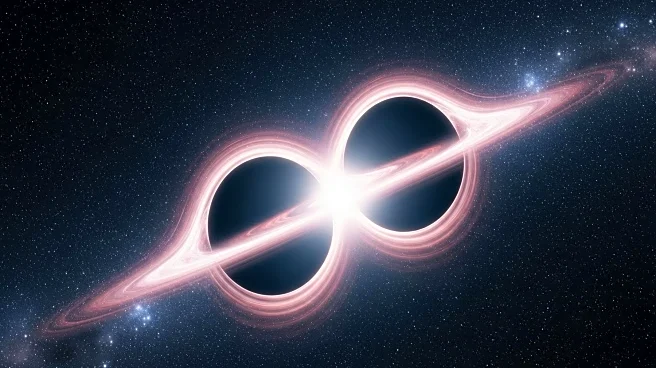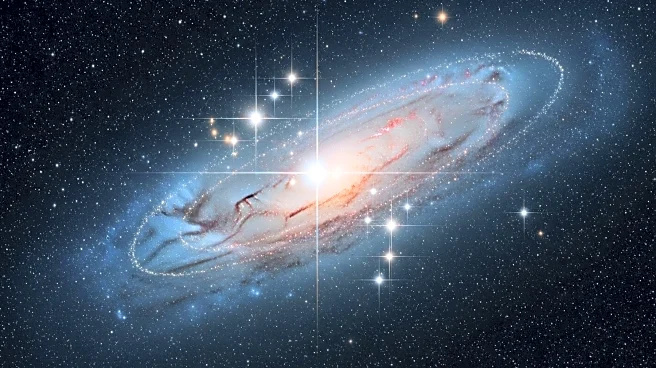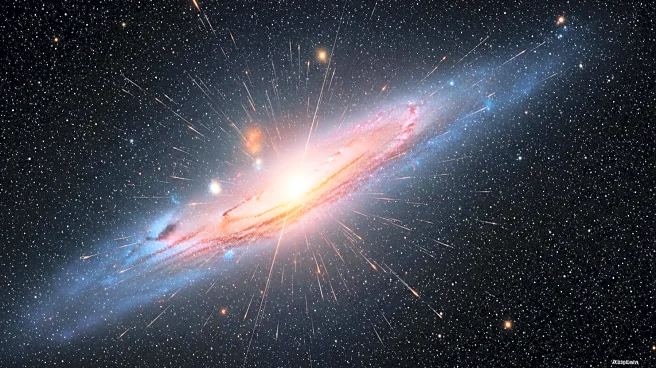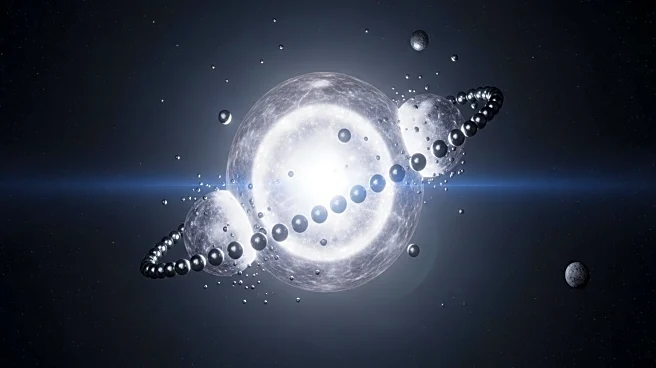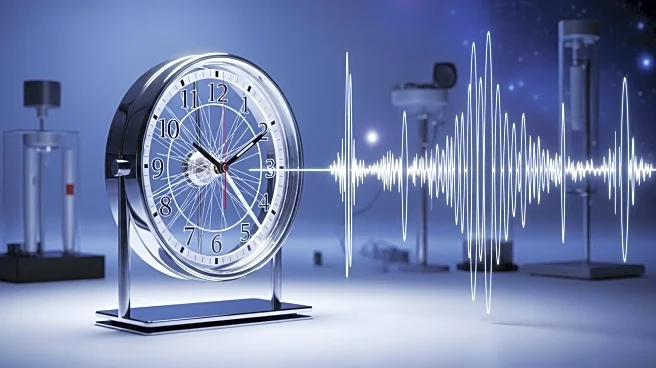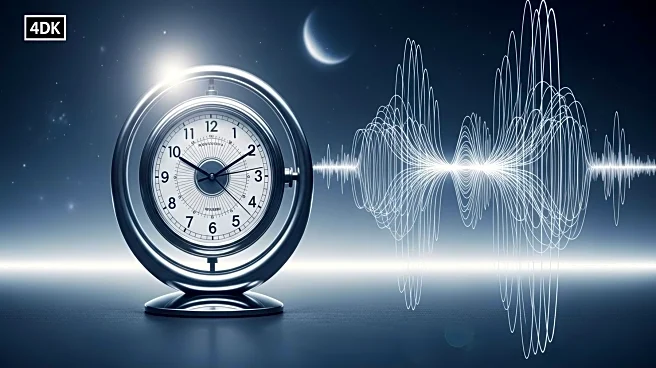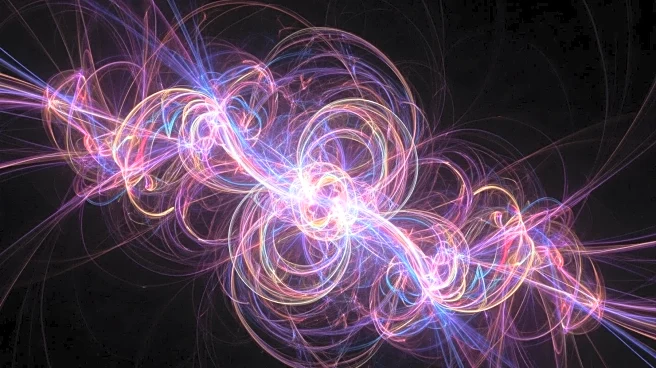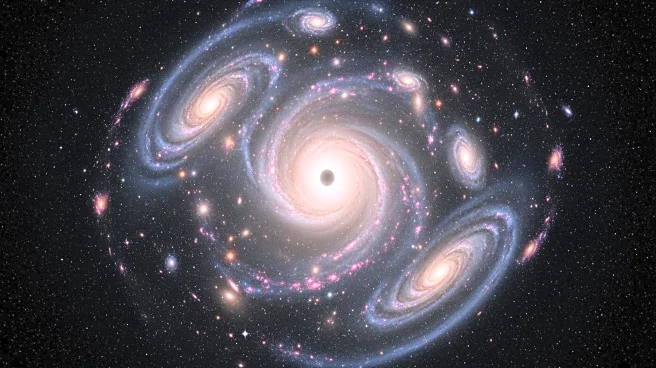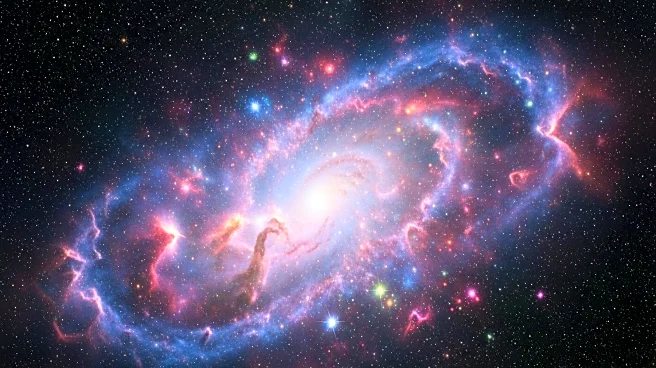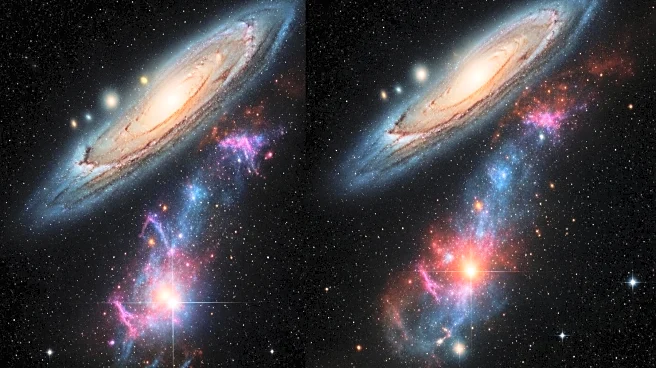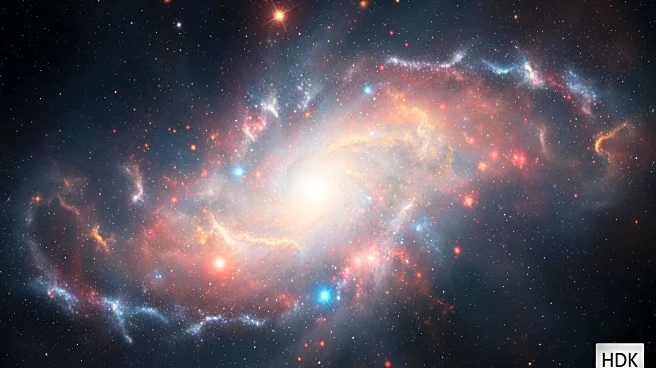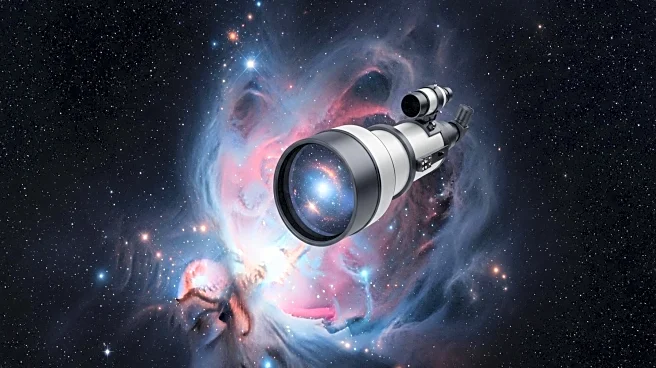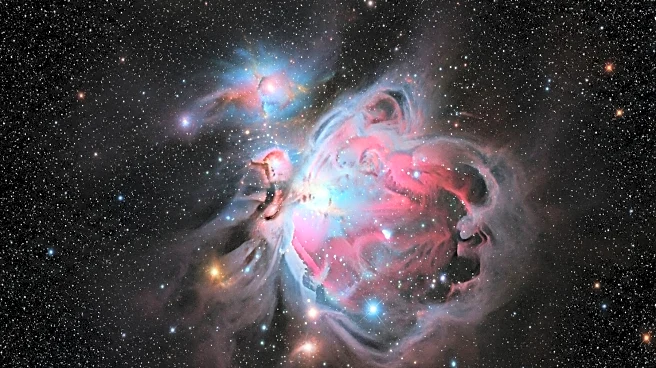What is the story about?
What's Happening?
Recent observations from the Laser Interferometer Gravitational-Wave Observatory (LIGO) have provided new insights into black hole behavior, confirming predictions made by Albert Einstein and Stephen Hawking. The study, led by astrophysicists Maximiliano Isi and Will Farr, analyzed gravitational waves produced by a black hole merger, offering a clearer view of black hole properties and the structure of space-time. The findings, published in Physical Review Letters, demonstrate that black holes are simple objects described by mass and spin, as theorized by Roy Kerr in 1963. The research also supports Hawking's area theorem, which posits that a black hole's event horizon can only grow, aligning with the second law of thermodynamics.
Why It's Important?
These findings have significant implications for the field of astrophysics, providing empirical evidence for theories that have been largely speculative. The confirmation of Hawking's area theorem and the simplicity of black holes as described by Kerr's equation could lead to advancements in understanding quantum gravity, potentially bridging gaps between general relativity and quantum physics. The improved precision of gravitational wave detectors promises further discoveries, enhancing our comprehension of the universe's fundamental laws and the nature of space-time.
What's Next?
Future advancements in gravitational wave detection technology are expected to increase sensitivity tenfold, allowing for more rigorous testing of black hole characteristics. This could lead to deeper insights into the extreme space-times produced by black holes and further validation of theoretical models. As the field progresses, scientists anticipate uncovering more about the nature of black holes and their role in the cosmos.
Beyond the Headlines
The study highlights the profound theoretical implications of black hole behavior, suggesting that aspects of black holes can be used to probe the true nature of space and time. This could lead to breakthroughs in understanding the thermodynamics of black holes and their connection to the second law of thermodynamics, offering new perspectives on the universe's fundamental structure.
AI Generated Content
Do you find this article useful?
